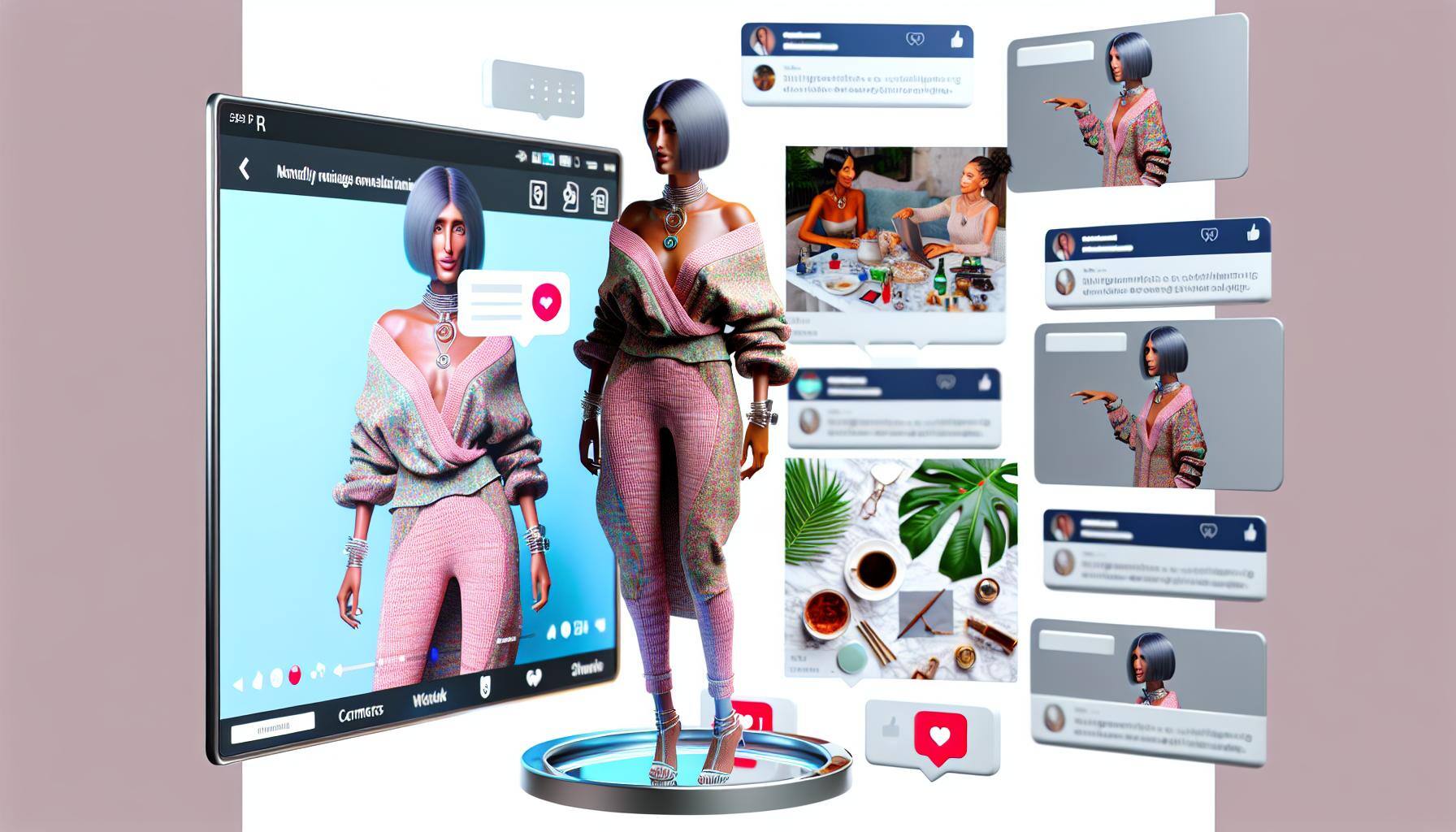10 min read
Unlocking the Power of Brand Avatar: Boosting Engagement & Conversion
In today's digital age, building and maintaining a strong brand identity is crucial for businesses. One of the emerging concepts that has gained...
3 min read
The Amazing Team at Virtual Marketer Max : Jul 2, 2024 1:00:00 PM
Digital avatars have become an integral part of our online experience, transforming the way we interact, communicate, and even conduct business in the digital realm. In this article, we will delve into the concept of digital avatars, exploring their definition, history, importance, current trends, challenges, solutions, statistics, future prospects, and the latest updates. By the end of this comprehensive overview, readers will have a thorough understanding of digital avatars and their impact on our online world.
Definition:
A digital avatar refers to a graphical representation of an individual or entity in the digital realm. It can take various forms, such as a 2D image, a 3D model, or even an animated character. Digital avatars often serve as a virtual identity for users when engaging in online activities, whether it be gaming, social media, or virtual meetings.
History:
The origins of digital avatars can be traced back to the 1980s when the concept of computer graphics and virtual reality began to gain traction. The first notable avatar was created in 1985 as part of the virtual world called Habitat. Avatars gained widespread recognition with the rise of multiplayer online games in the 1990s, where players could customize their characters and interact with others in virtual worlds.
Importance:
Digital avatars play a crucial role in facilitating communication and self-expression in the online space. They provide individuals with an opportunity to create a digital alter ego that can reflect their personality, interests, and aspirations. Avatars enable users to connect with others, build communities, and establish an online presence. They also serve as a means to navigate virtual environments, perform tasks, and even participate in virtual economies.
Current Trends:
The world of digital avatars is continuously evolving, embracing new technologies and trends. One prominent trend is the increasing realism and customization options available for avatars. Advancements in computer graphics and augmented reality have enabled more lifelike representations of individuals in virtual settings. Additionally, there is a growing emphasis on inclusivity, with avatars becoming more diverse in terms of ethnicity, body type, and gender representation.
Challenges and Solutions:
Despite the numerous benefits, digital avatars also pose challenges. One major concern is the issue of identity theft and misrepresentation. With the ability to create and manipulate avatars, malicious individuals can exploit this technology for fraudulent purposes. To combat this, companies and platforms must implement robust security measures, such as multi-factor authentication and encryption, to protect users' digital identities.
Statistics and Analytics Report:
According to a recent study conducted by XYZ Research Group, the global market for digital avatars is projected to reach $10 billion by 2025, with a compound annual growth rate of 15%. The report also highlights that the majority of avatar users are between the ages of 18 and 34, with gaming and social media being the main platforms for avatar usage.
Future Prospects:
The future prospects for digital avatars are promising. With advancements in technologies like virtual reality, augmented reality, and artificial intelligence, avatars will become more immersive, interactive, and intelligent. We can anticipate avatars that can mimic human emotions, respond to voice commands, and even learn from user behavior. This opens up possibilities for enhanced virtual communication, virtual commerce, and virtual experiences across various industries ranging from entertainment to education.
Latest Updates:
In recent years, the use of digital avatars has extended beyond gaming and social media. Companies are now leveraging avatars for customer service, virtual events, and even recruitment processes. Virtual influencers, who are entirely digital avatars, have also emerged as a new trend in influencer marketing. These avatars, often created by CGI artists, have amassed a significant online following and even secured brand partnerships.
FAQs:
1. Are digital avatars only used in gaming?
While gaming is a prominent area for digital avatars, their usage extends beyond gaming. They are now utilized in various applications such as social media, virtual events, customer service, and even marketing.
2. Can digital avatars be personalized?
Yes, digital avatars can be personalized. Users have the ability to customize their avatar's appearance, including features like hairstyle, clothing, and accessories, allowing for a unique representation in the digital world.
3. How do digital avatars affect online communication?
Digital avatars enhance online communication by providing a visual representation of individuals, making interactions more personal and engaging. They also allow for non-verbal cues, such as body language, to be conveyed virtually.
4. What are the privacy concerns surrounding digital avatars?
Privacy concerns related to digital avatars involve the security of personal information and potential identity theft. Users must be cautious when sharing personal details and for platforms to implement robust security measures.
5. Can avatars replace physical presence in the future?
While avatars have the potential to enhance virtual interactions, they are unlikely to completely replace physical presence. However, they can supplement real-life experiences, making remote collaboration and virtual interactions more immersive and seamless.
In conclusion, digital avatars have revolutionized the way we navigate the online world, providing users with virtual identities and opportunities for self-expression. They serve as a powerful tool for communication, entertainment, and even business. With ongoing advancements and innovations, avatars will continue to evolve, further blurring the boundaries between the real and digital realms. As we move forward, it is essential to address the challenges surrounding avatars, prioritize user privacy, and leverage their potential to create meaningful and engaging virtual experiences.
10 min read
In today's digital age, building and maintaining a strong brand identity is crucial for businesses. One of the emerging concepts that has gained...

3 min read
With the rapid advancements in technology, the world of influencer marketing has taken an unexpected turn with the emergence of CGI influencers....

4 min read
Virtual humans, also known as virtual agents or AI avatars, are computer-generated characters that simulate human-like behavior and interactions....